Architects Use Mud, Straw & Jaggery to Build Eco-Friendly Home That Stays Cool
Architects Manasi and Guruprasad from Kerala built an eco-friendly house using natural materials like mud and reused wood. Here's how to build a home and how much it costs.
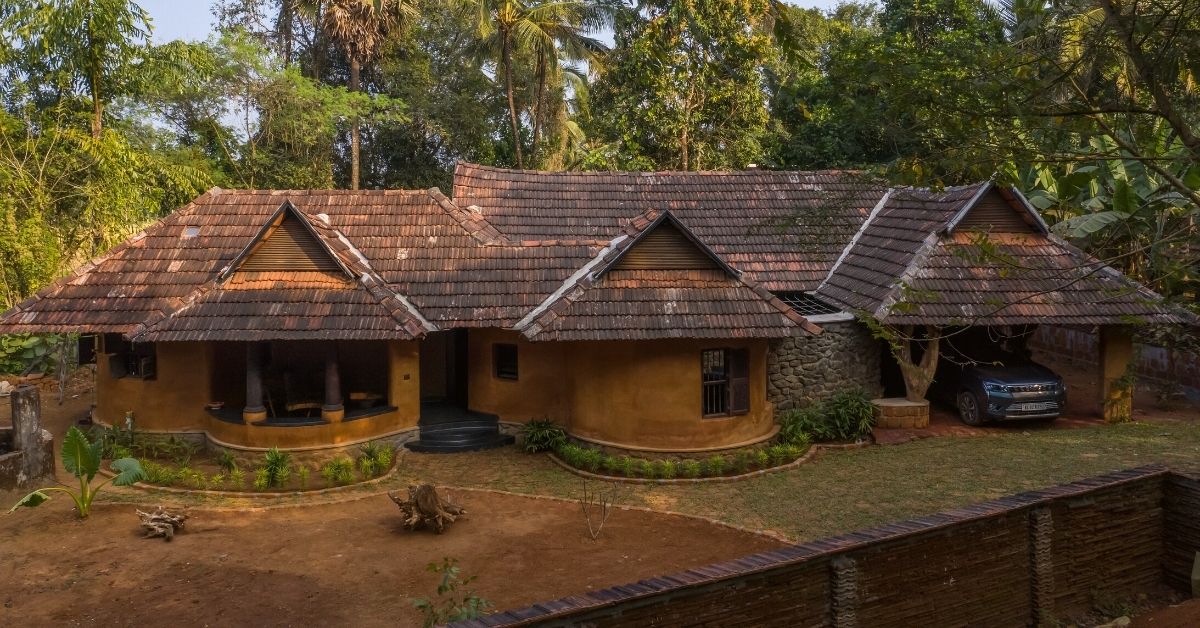
“If we can create magic by using things that people least value these days, wouldn’t that be wonderful?,” says Architect Manasi, co-founder of Bhoomija creations, in a voice filled with contentment. The mud house built by Architect Manasi and her husband Architect Guruprasad stands tall in a beautiful village landscape adjacent to paddy fields in Pattambi, Palakkad district of Kerala.
Location: Pattambi in Palakkad, Kerala
Beds and bath: 3 bedrooms with attached bathrooms
Size: 2,000 sqft
Time it took to build: 6 years
The concept of a mud house came up when Mukesh C, a social worker approached the architect couple to build an eco-friendly house for their small family of four. “We always approach a project by considering all the challenges that come with it. Then we try to build something there that’s inclusive of nature, without breaking or disturbing its surroundings,” says Manasi, adding that the discussions that started with building an eco-friendly house using sustainable and eco-friendly materials or methods quickly elevated to the concept of building a mud house.
“When we visited the site, we noticed that the site had the potential to build a mud house, from where we could source the mud without manipulating the land much. The thought itself gave us so much excitement and our client as well-loved the idea,” she says with a smile.
Their ideas and efforts gave birth to ‘Gaea’, as named by the architects, a name that translates to mother earth in Greek. The eco-friendly and sustainable mud house of around 2,000 sqft was built based on the concept of reduce, reuse, and recycle. The ancient sustainable construction methods adapted in building it also makes it cost-efficient.
A house that bloomed in the mud
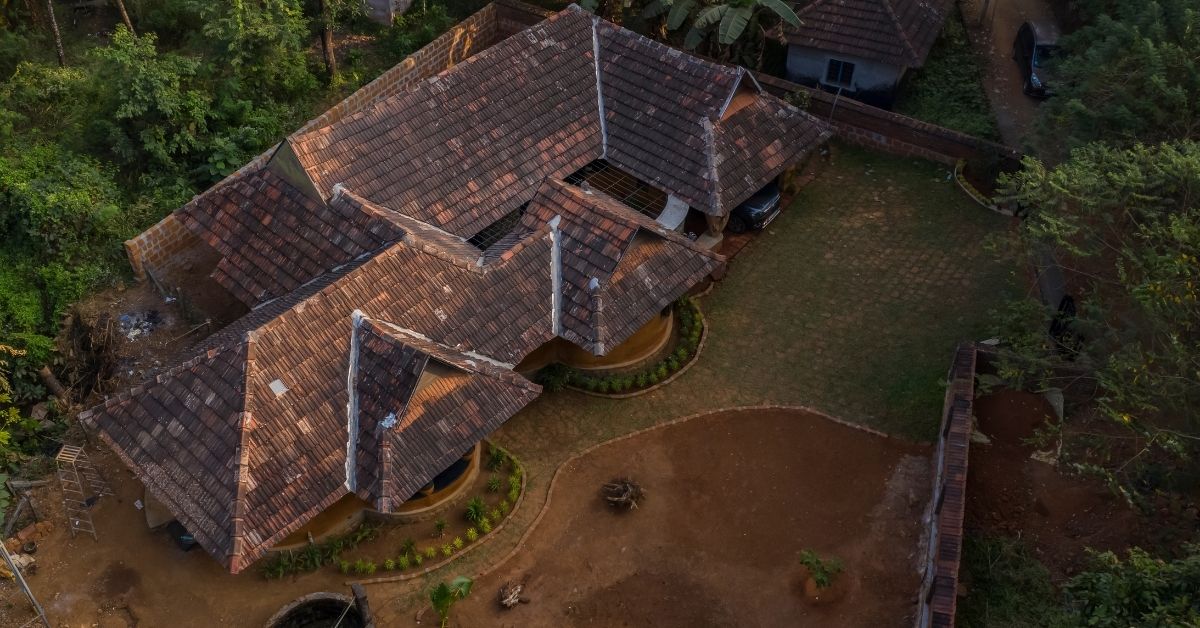
Being social workers, Mukesh and his wife Smitha always had guests at home. So, when it came to building a house of their own, it wasn’t difficult for the couple to make a decision that would set a model in the society. “When my daughter brought tree saplings from her school, we didn’t know where to plant them. We were staying in a small concrete house which didn’t have enough space around it. That’s how we decided to buy a place where we can build an eco-friendly house and have enough space for our children and nature,” says Mukesh who bought 21 cents of land near a paddy field.
The one-storeyed mud house set in 10 cents of land is built keeping in mind the traditional architecture of Kerala and the ancient technique of cob. “We considered a few eco-friendly construction methods and finally decided to choose the cob method which was perfect for hand-sculptured spaces,” says Manasi.
“In the Cob method, we use a mixture of mud, straw, lime and water to build the walls. Besides, several other natural materials like rice husk, jaggery, kaduka leaf (terminalia chebula) etc are used in the mixture as stabilizers and also for better bondage and pest control. Once it’s dry, the surface is plastered with a mix of finely sieved soil and lime to get a smooth and sheen finish,” she elaborates, adding that there are no chemicals involved in the process.
Other than the mud walls, they have also included a few walls made using the stones obtained while digging a well within the site. “We have only used locally sourced materials for constructing the house, be it the mud or the stones,” she says.
The house, built in a curved fashion, has spacious three bedrooms with attached bathrooms, a kitchen, living space, study space, dining space, verandah, sit-out, car porch and a beautiful open courtyard in the middle with a lily-pond. “The courtyard helps in lighting the spaces around it and when it rains, the water falls through the courtyard. Which in turn helps in recharging the groundwater,” adds Mukesh.
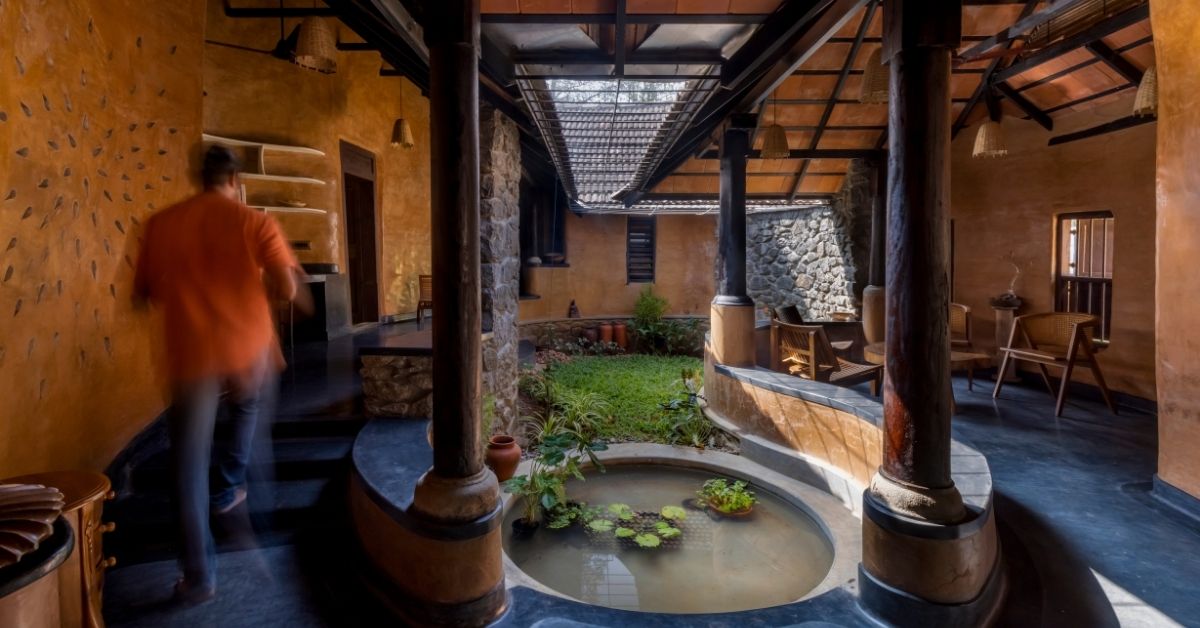
“The best part about the living space is that we could see each and every corner of the house from there,” he says, adding that the open courtyard is his favourite space in the house.
The bedrooms have inbuilt bed cots with storage spaces. “The frame of the bed is built with red bricks and there’s more than enough space for storage. Besides, each bedroom has a big inbuilt wardrobe to keep everything inside rather than spreading it around the room,” he adds.
Though most of the walls are plastered with mud, the bathrooms have been plastered with cement. “The bathrooms are places that are prone to moisture risk, so it was better to use cement. We have also used broken tiles on the walls of the kitchen and bathroom to reduce the risk,” says Manasi, adding that the same way the rooms have several spaces decorated using broken tiles.
The study space comes as an extension of the verandah that runs around the courtyard connecting different corners of the house. “We also made built-in tables for children to study,” she adds.
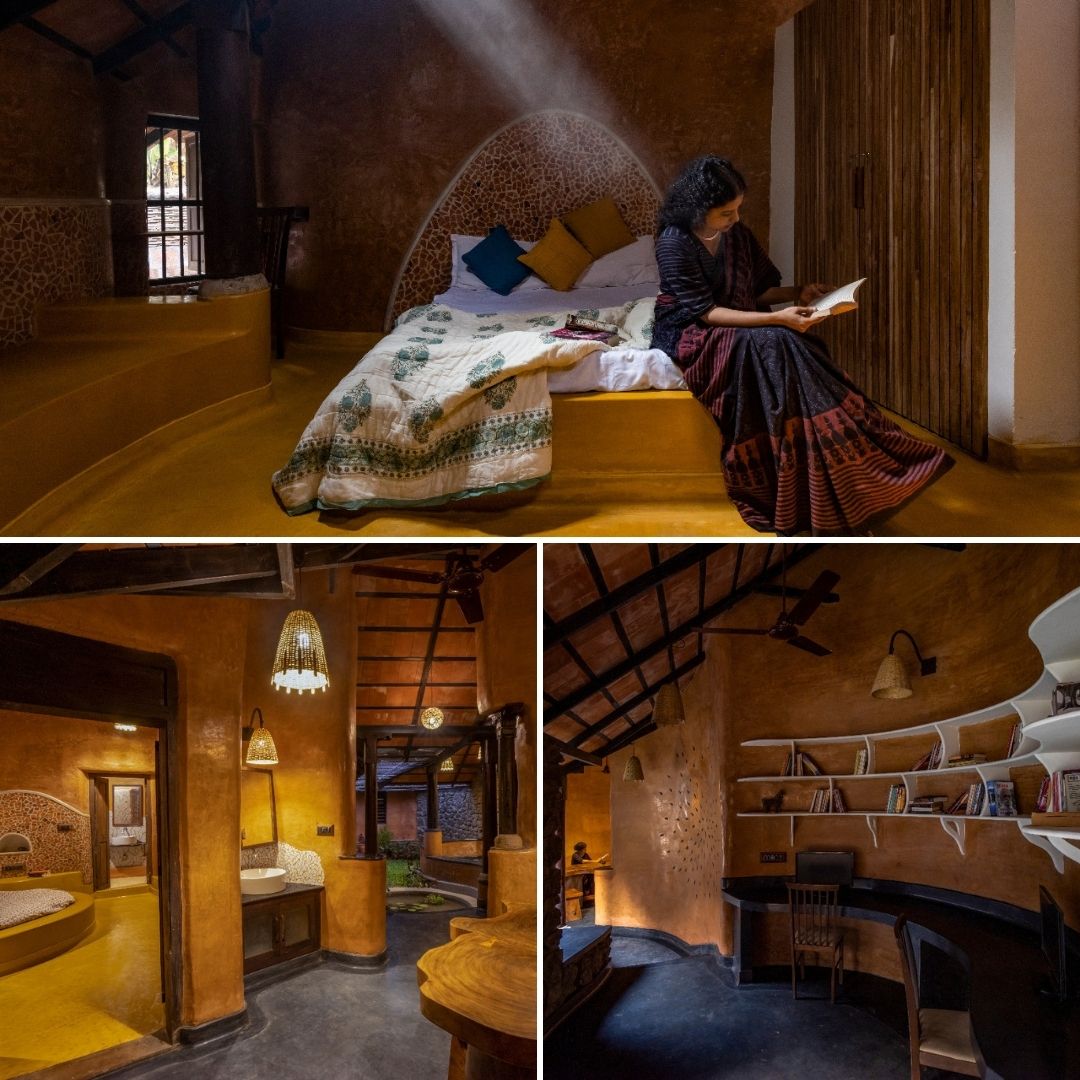
“The windows, doors and most of the other parts that required wood uses reused or old wood that was sourced locally,” says Mukesh.
The roofing is done using double-layered clay tiles. “The space between the two layers helps in reducing the heat and keeps the rooms cool throughout. All the clay tiles were reused ones,” explains Manasi. “We have used the same clay tiles for building the compound walls as well,” she adds.
Mukesh says that the house is much cooler than a concrete house. “The house remains cool even this summer. We don’t have ACs here. Also, we don’t use fans most of the time except in afternoons when it gets a bit warmer,” he adds.
Talking about the cooling effect the house provides, Manasi says that it is one of the advantages of adapting the Cob method for construction. “Since the walls are built with mud, it provides a cooling effect. Unlike brick walls, the mud walls are thicker and hence it retains the coolness within the spaces inside,” she adds.
The flooring of the house is done using the traditional coloured oxide.
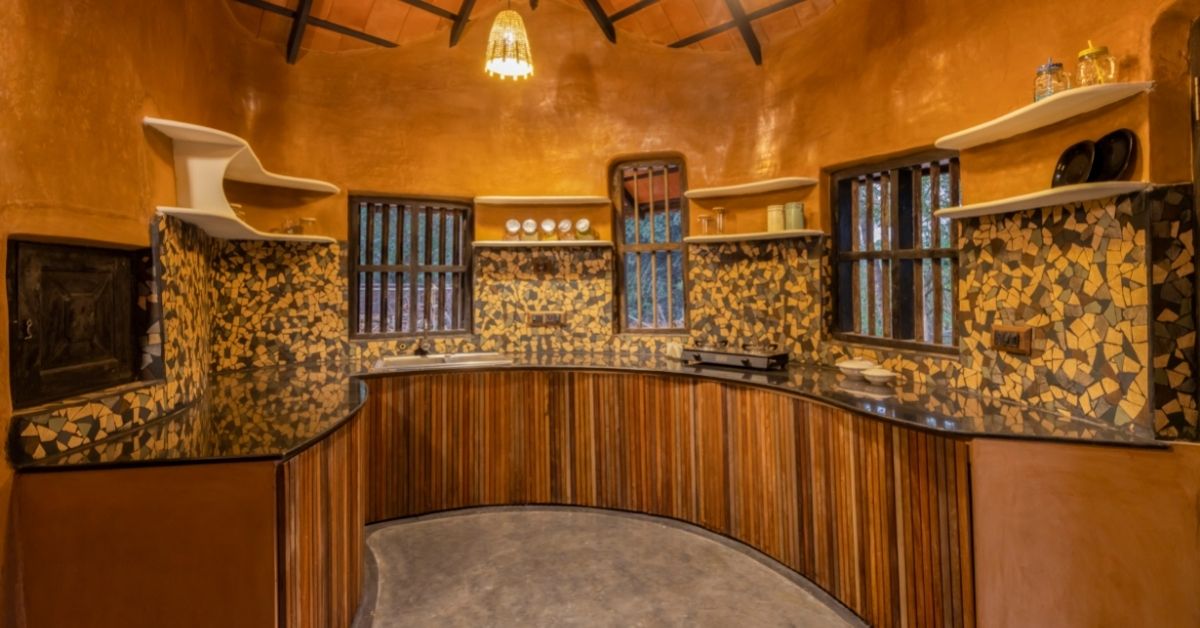
The kitchen has wooden racks and granite slabs. “The best part about the kitchen is a small window that opens to the front yard from where one could see people coming into the house. We can also serve tea or coffee to them through this window,” Mukesh says with a smile.
It took around six years to build the house, says Mukesh who had some financial constraints to build it in one stretch. “The budget calculated by the architects was Rs 35 lakh but since the construction process was extended to around six years, I had to spend around Rs 50 lakh including interior and site developments,” says Mukesh adding that the overall cost is still less than building a concrete house of this size.
(Edited by Vinayak Hegde)

Similar Story

‘I Failed But Didn’t Stop’: Kerala Teacher Helps Aspirants with Disabilities Crack UPSC for Free
Once a UPSC aspirant, Kerala’s Jobin S Kottaram helps students and aspirants with motor disabilities crack the examination for free. He says his aim is to increase their representation in leadership roles.
Read more >
If you found our stories insightful, informative, or even just enjoyable, we invite you to consider making a voluntary payment to support the work we do at The Better India. Your contribution helps us continue producing quality content that educates, inspires, and drives positive change.
Choose one of the payment options below for your contribution-
By paying for the stories you value, you directly contribute to sustaining our efforts focused on making a difference in the world. Together, let's ensure that impactful stories continue to be told and shared, enriching lives and communities alike.
Thank you for your support. Here are some frequently asked questions you might find helpful to know why you are contributing?


This story made me
-
97
-
121
-
89
-
167












